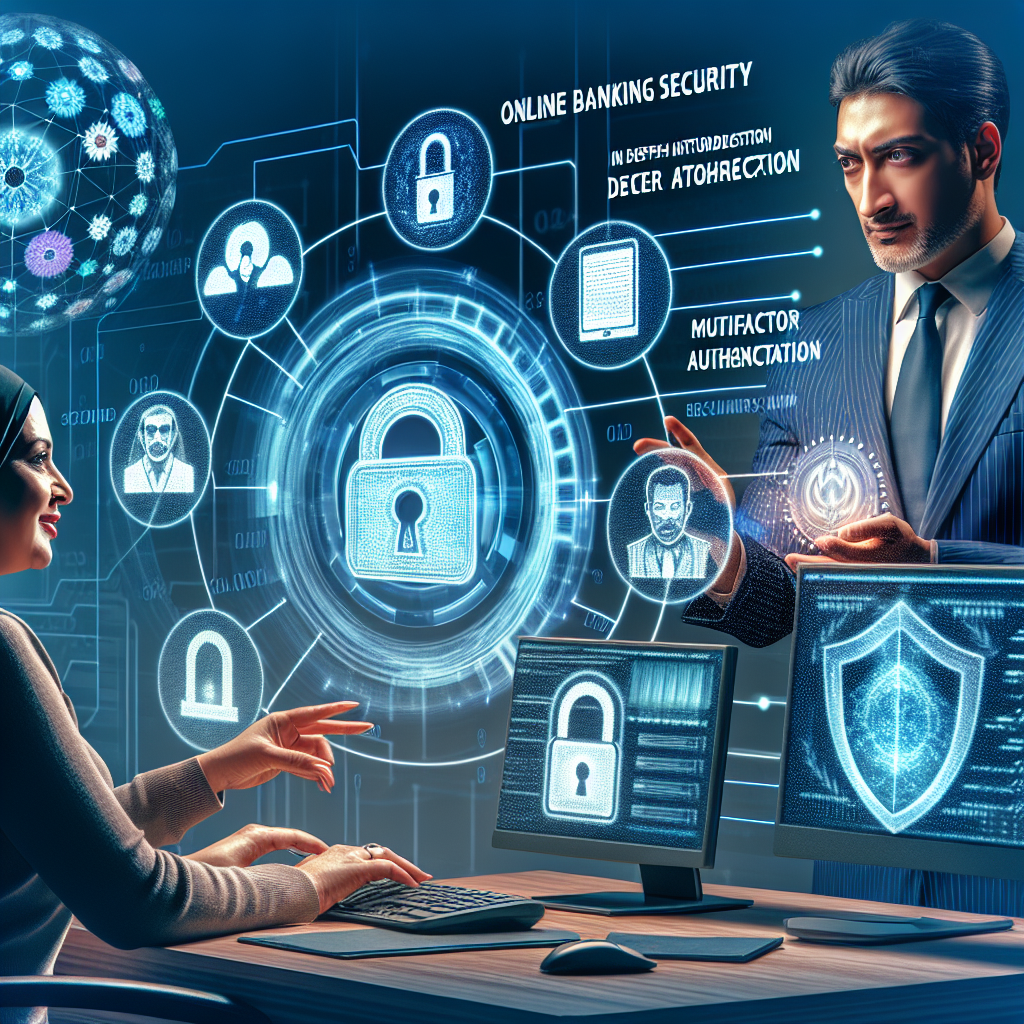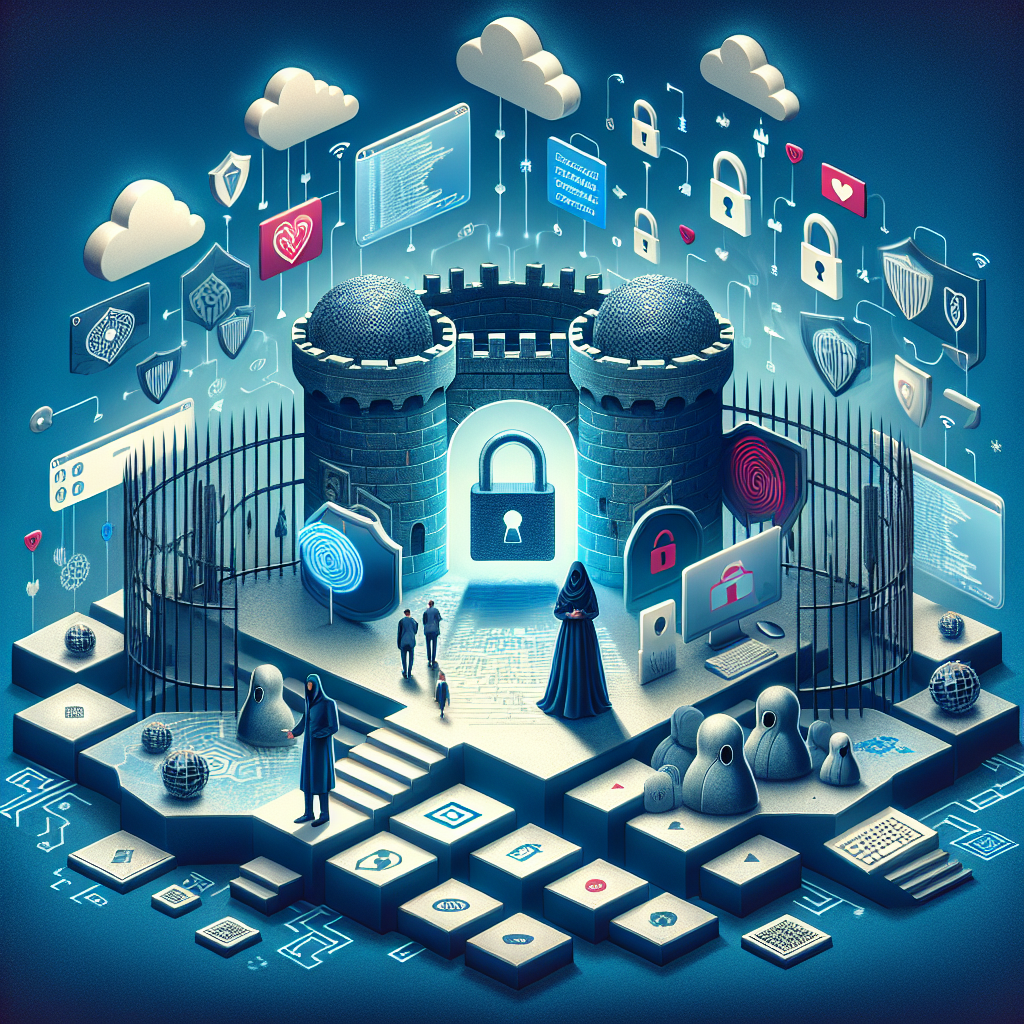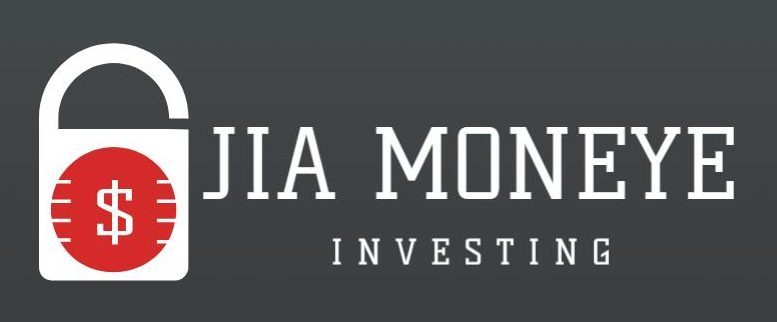
Navigating the World of Online Banking Security
Understanding the Basics of Online Banking Security
Navigating the world of online banking security can seem like a daunting task, especially for those who are new to the digital banking scene. However, understanding the basics of online banking security is not as complex as it may seem. With a friendly tone, let’s delve into the world of online banking security and explore its fundamental aspects.
Online banking has revolutionized the way we manage our finances, offering unparalleled convenience and ease of access. However, this digital convenience comes with its own set of security challenges. Cybercriminals are always on the lookout for opportunities to exploit vulnerabilities and gain unauthorized access to personal and financial information. Therefore, it’s crucial to understand the basics of online banking security to protect your hard-earned money.
The cornerstone of online banking security is encryption. Encryption is a process that transforms readable data into a coded version, which can only be decoded by someone who has the correct decryption key. This means that even if a hacker intercepts your data, they won’t be able to understand it without the key. Banks use advanced encryption techniques to ensure that your data remains secure during transmission.
Another critical aspect of online banking security is authentication. This is the process that verifies your identity before granting access to your account. Banks use various methods for authentication, such as passwords, security questions, and even biometric data like fingerprints or facial recognition. Two-factor authentication, which requires you to provide two different types of identification, is becoming increasingly common as it provides an additional layer of security.
Firewalls also play a crucial role in online banking security. A firewall is a system designed to prevent unauthorized access to or from a private network. Banks use firewalls to block unauthorized access to their servers, where your financial information is stored.
While banks take these measures to ensure your online banking experience is secure, it’s also essential for you to take some steps to protect your information. One of the most important things you can do is to create strong, unique passwords for your online banking accounts. Avoid using easily guessable passwords like your birthdate or “123456”. Also, it’s a good practice to change your passwords regularly.
Be wary of phishing scams, where fraudsters try to trick you into revealing your personal information by pretending to be your bank. Always check the sender’s email address and never click on links or download attachments from suspicious emails.
Moreover, ensure that your computer and mobile devices are protected with up-to-date antivirus software. This software can detect and remove malicious software that could compromise your online banking security.
Lastly, always log out of your online banking session when you’re finished, especially if you’re using a public computer. This simple step can prevent someone else from gaining access to your account.
In conclusion, while online banking offers great convenience, it’s essential to understand the basics of online banking security to protect your financial information. By understanding encryption, authentication, and firewalls, and by taking steps to protect your information, you can navigate the world of online banking with confidence. Remember, security is a shared responsibility, and every little step counts towards creating a safer online banking environment.
Advanced Strategies for Safeguarding Your Online Banking Transactions

Navigating the world of online banking security can seem like a daunting task, especially with the constant evolution of technology and the ever-present threat of cybercrime. However, with a few advanced strategies, you can safeguard your online banking transactions and enjoy the convenience of digital banking with peace of mind.
Firstly, it’s crucial to understand that your online banking security is a shared responsibility between you and your bank. Banks invest heavily in security infrastructure to protect your transactions, but you also have a role to play in ensuring your online banking activities are secure. This begins with the basics, such as creating strong, unique passwords for your online banking accounts and changing them regularly. It’s also advisable to avoid using public Wi-Fi networks when accessing your bank accounts online, as these networks are often unsecured and can be easily exploited by cybercriminals.
In addition to these basic precautions, there are several advanced strategies you can employ to further enhance your online banking security. One such strategy is the use of two-factor authentication (2FA). This adds an extra layer of security to your online banking transactions by requiring you to provide two forms of identification before you can access your account. This could be something you know (like a password), something you have (like a mobile device), or something you are (like a fingerprint). Even if a cybercriminal manages to steal your password, they would still need the second form of identification to access your account.
Another advanced strategy is to regularly monitor your bank accounts for any suspicious activity. Most banks offer alerts that can notify you of any unusual transactions, such as large withdrawals or transfers to unfamiliar accounts. These alerts can be sent via email, text message, or push notifications on your mobile device, allowing you to quickly identify and respond to any potential security threats.
Furthermore, it’s important to keep your devices and software up to date. Cybercriminals often exploit vulnerabilities in outdated software to gain unauthorized access to your online banking accounts. Regularly updating your devices and software ensures that you have the latest security patches and fixes, making it harder for cybercriminals to breach your online banking security.
Lastly, be wary of phishing scams. These are deceptive emails or messages that trick you into revealing your personal information or login credentials. Always verify the source of any communication asking for your personal information, and never click on suspicious links or download attachments from unknown sources.
In conclusion, navigating the world of online banking security doesn’t have to be overwhelming. By taking a proactive approach and employing these advanced strategies, you can safeguard your online banking transactions and enjoy the convenience of digital banking with confidence. Remember, your online banking security is a shared responsibility, and every step you take towards enhancing your security is a step towards thwarting the efforts of cybercriminals.
The Role of Two-Factor Authentication in Online Banking Security
Navigating the world of online banking security can seem like a daunting task, especially with the increasing sophistication of cyber threats. However, one of the most effective ways to protect your online banking information is through the use of two-factor authentication. This security measure plays a crucial role in safeguarding your financial data and ensuring that only you have access to your accounts.
Two-factor authentication, often abbreviated as 2FA, is a security process that requires users to provide two different types of identification to verify their identity. Typically, this involves something you know, such as a password or PIN, and something you have, like a mobile device or a physical token. This dual-layered approach significantly enhances the security of your online banking transactions by making it much harder for cybercriminals to gain unauthorized access to your accounts.
The beauty of two-factor authentication lies in its simplicity. When you attempt to log into your online banking account, you’ll first enter your username and password. Once these details are entered, the second layer of security kicks in. You’ll be prompted to provide another piece of information, which could be a unique code sent to your mobile device via text message or an app, or a fingerprint or facial recognition if your device supports biometric authentication. This means that even if someone manages to steal or guess your password, they would still need this second piece of information to access your account.
Many banks have already incorporated two-factor authentication into their online and mobile banking platforms. If your bank offers this feature, it’s highly recommended that you enable it. The process is usually straightforward and involves following a few simple steps provided by your bank. If you’re unsure whether your bank offers two-factor authentication or how to activate it, a quick call to your bank’s customer service should provide the answers you need.
While two-factor authentication significantly enhances the security of your online banking, it’s important to remember that it’s not foolproof. Cybercriminals are constantly developing new ways to bypass security measures. Therefore, it’s crucial to stay vigilant and take additional steps to protect your online banking information. This includes regularly updating your passwords, avoiding clicking on suspicious links, and always logging out of your banking session when you’re finished.
Moreover, be wary of any communication that asks for your banking details or prompts you to click on a link to log in to your account. Banks will never ask for your password or other sensitive information via email or text message. If you receive such a communication, it’s likely a phishing attempt, and you should report it to your bank immediately.
In conclusion, two-factor authentication plays a pivotal role in online banking security. It provides an additional layer of protection that makes it much harder for unauthorized individuals to access your accounts. While it’s not a silver bullet, it’s a powerful tool in your cybersecurity arsenal. By combining two-factor authentication with other security best practices, you can significantly reduce the risk of falling victim to online banking fraud. So, take the time to enable this feature and give yourself the peace of mind that comes with knowing your financial information is well-protected.

